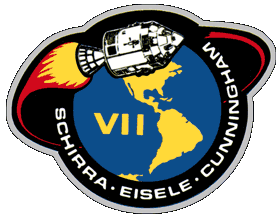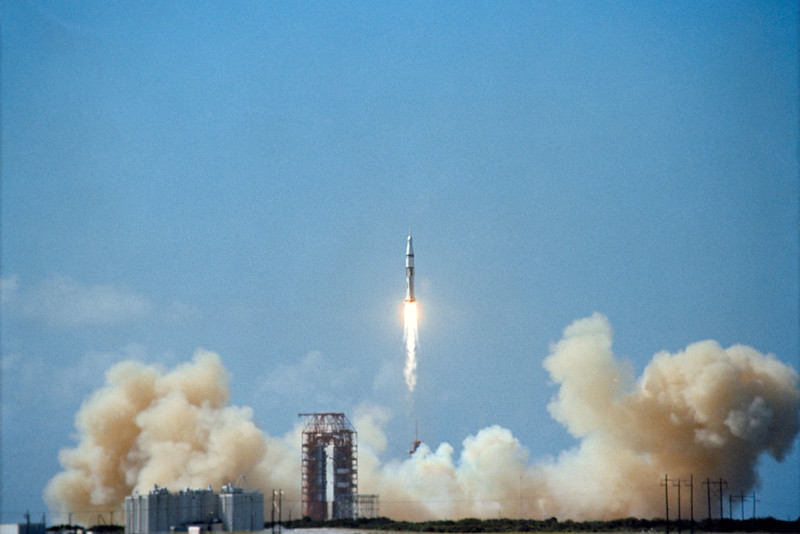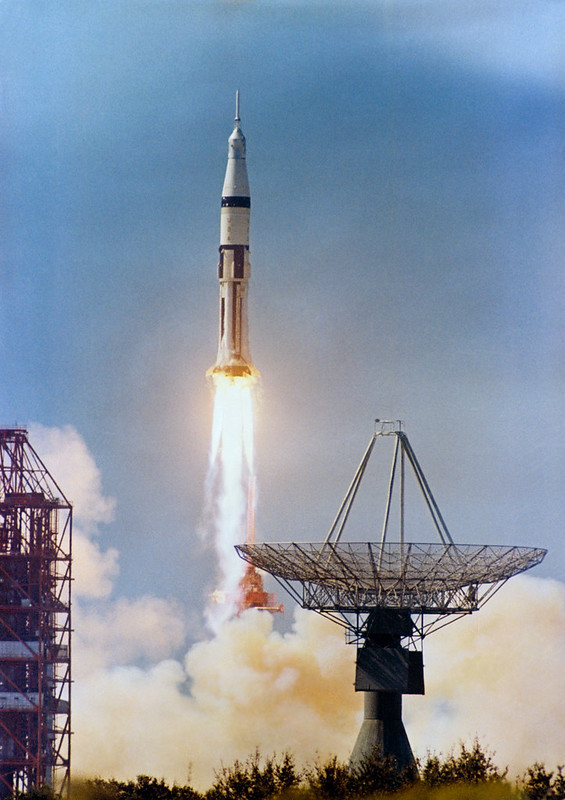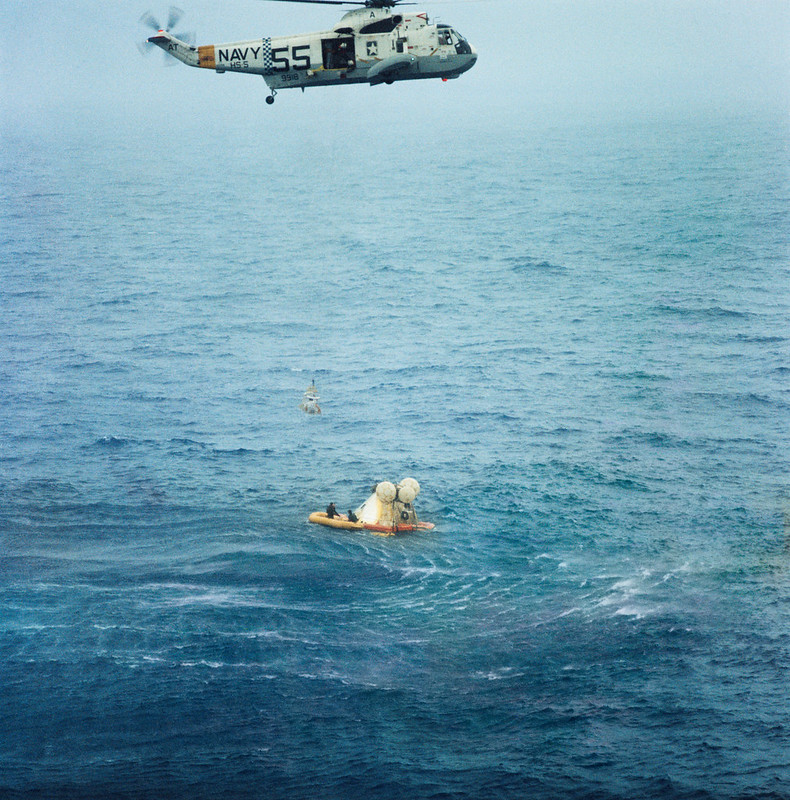Apollo 7 Fact Sheet
By Cliff Lethbridge

Apollo 7 (NASA Code: AS-205/CSM-101)
Launch Date: October 11, 1968
Launch Time: 11:02:45 a.m. EST
Launch Site: Launch Complex 34
Launch Vehicle: Apollo-Saturn IB AS-205
Command Service Module: CSM-101
Command Module Nickname: None
Lunar Module: Not Flown
Crew:
Walter “Wally” M. Schirra, Jr., Commander
Donn F. Eisele, Command Module Pilot
Walter Cunningham, Lunar Module Pilot
Back-up Crew: Stafford (CDR), Young (CMP), Cernan (LMP)
Mission Duration: 10 Days, 20 Hours, 9 Minutes, 3 Seconds
Number of Earth Orbits: 163
Recovery Date: October 22, 1968
Recovery: U.S.S. Essex (Atlantic Ocean)
Mission Summary:
Apollo 7 was the first manned Apollo flight and featured the first manned launch of the Saturn IB launch vehicle. This was the first manned launch from Cape Canaveral Launch Complex 34, the site of the deaths of astronauts Grissom, White and Chaffee on January 27, 1967.
Also for the first time, the Apollo Command Service Module (CSM) was flown with astronauts aboard. Essentially a practice flight, the crew tested guidance and control systems, spacesuit design, food supplies and work routines.
A Lunar Module (LM) used for lunar landing operations was not flown on Apollo 7. The Saturn IB second stage (S-IVB), Instrument Unit (IU), Spacecraft Lunar Adapter (SLA) and CSM were all placed into Earth orbit.
After a brief coast period, the S-IVB stage was re-ignited, placing the Apollo 7 spacecraft in a higher orbit. The CSM was later separated from the S-IVB stage and performed rendezvous operations with the booster, simulating future docking operations with an actual LM.
During rendezvous and station-keeping operations, the CSM approached to within 70 feet of the spent S-IVB stage.
Extensive spacecraft systems testing and checkouts were performed during the course of the mission. A total of eight Service Propulsion System (SPS) firings were conducted, resulting in several planned changes in orbital path.
The final SPS firing was the de-orbit retro-fire. The Command Module (CM) separated from the Service Module (SM) prior to re-entry.
A total of seven television transmissions from the Apollo 7 spacecraft were broadcast live via commercial television in the U.S. and overseas.
While in orbit, all three astronauts developed colds, without any apparent causes or aftereffects. Schirra became the first and only astronaut to fly in the Mercury, Gemini and Apollo programs.
SELECTED NASA PHOTOS FROM APOLLO 7











